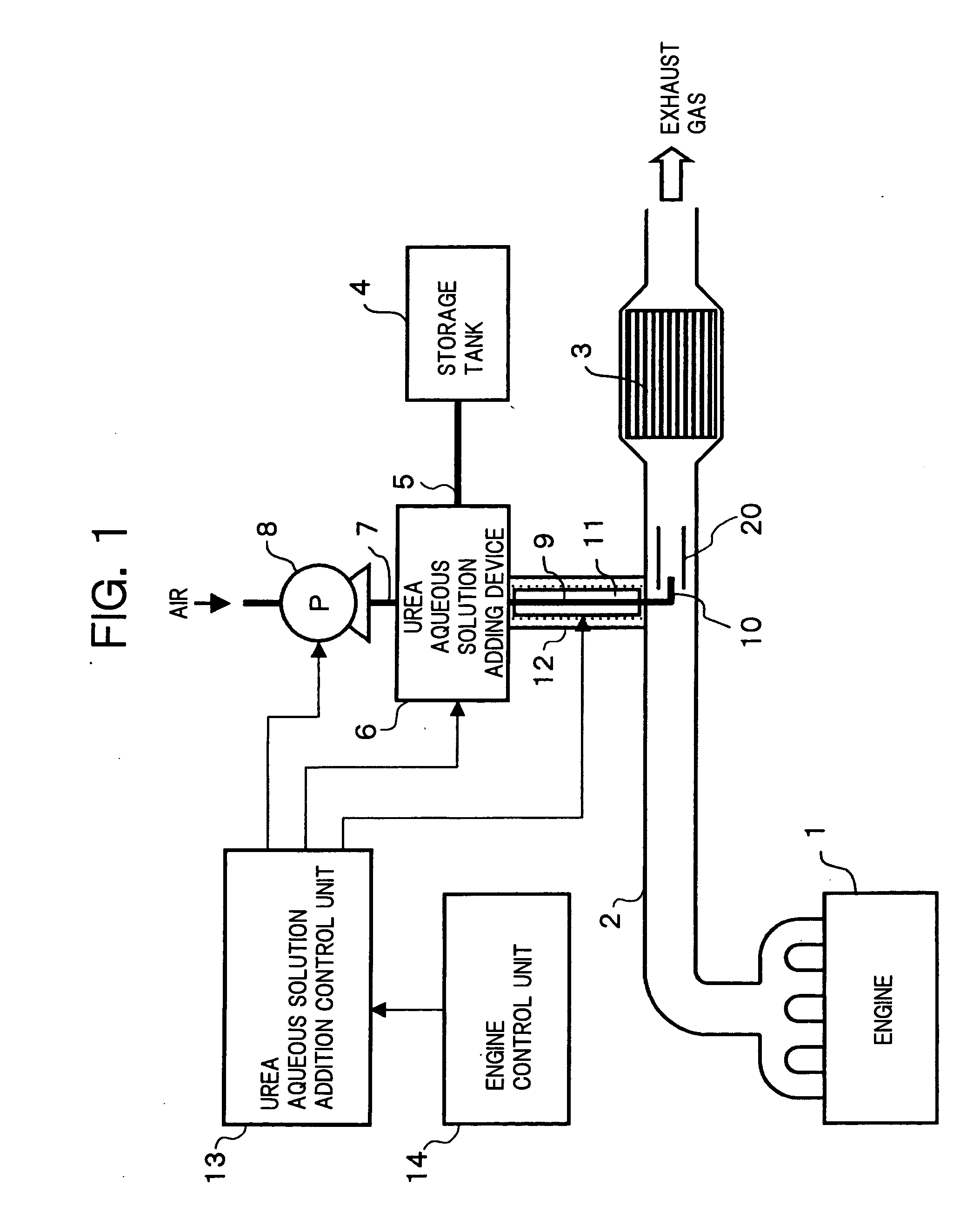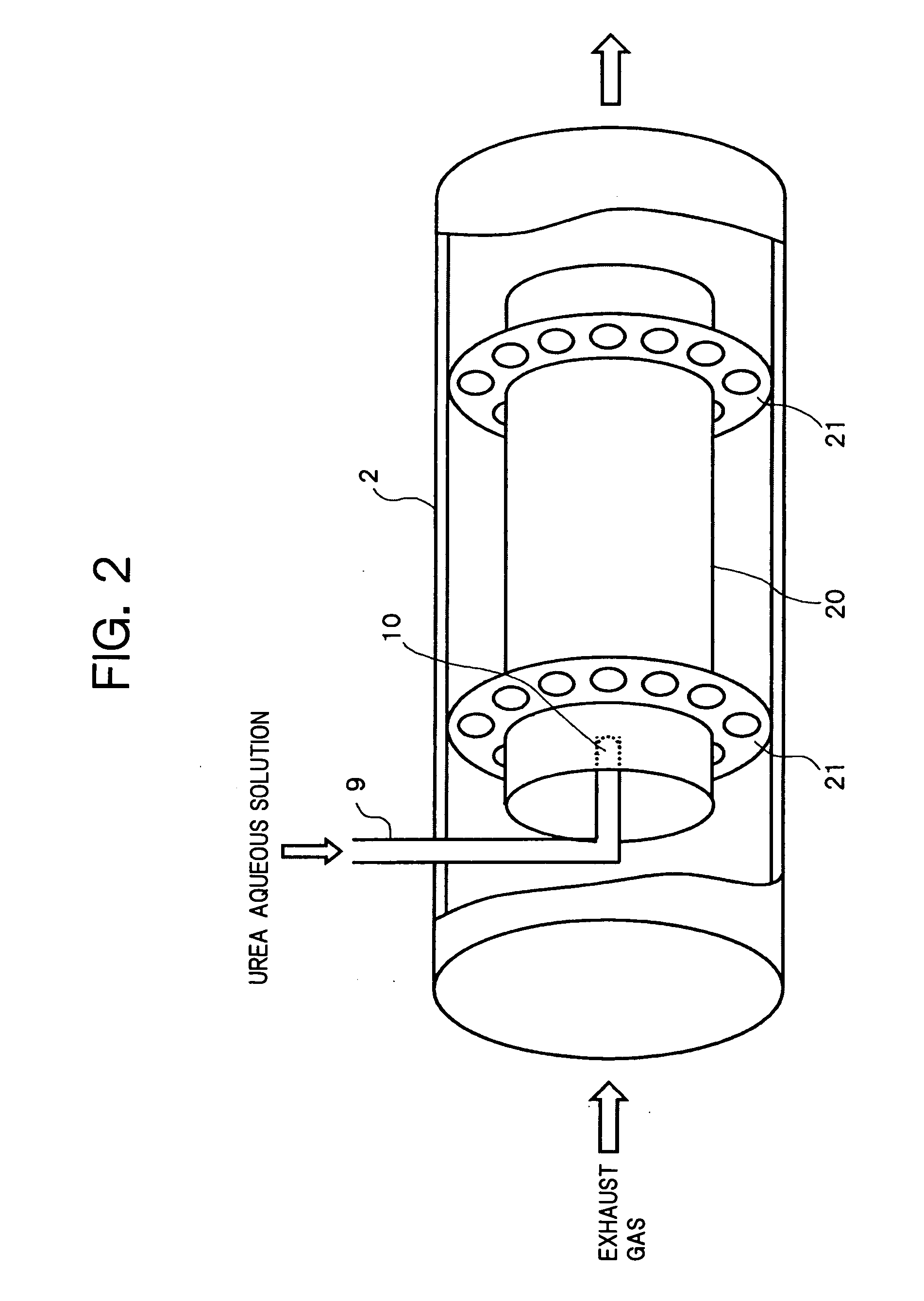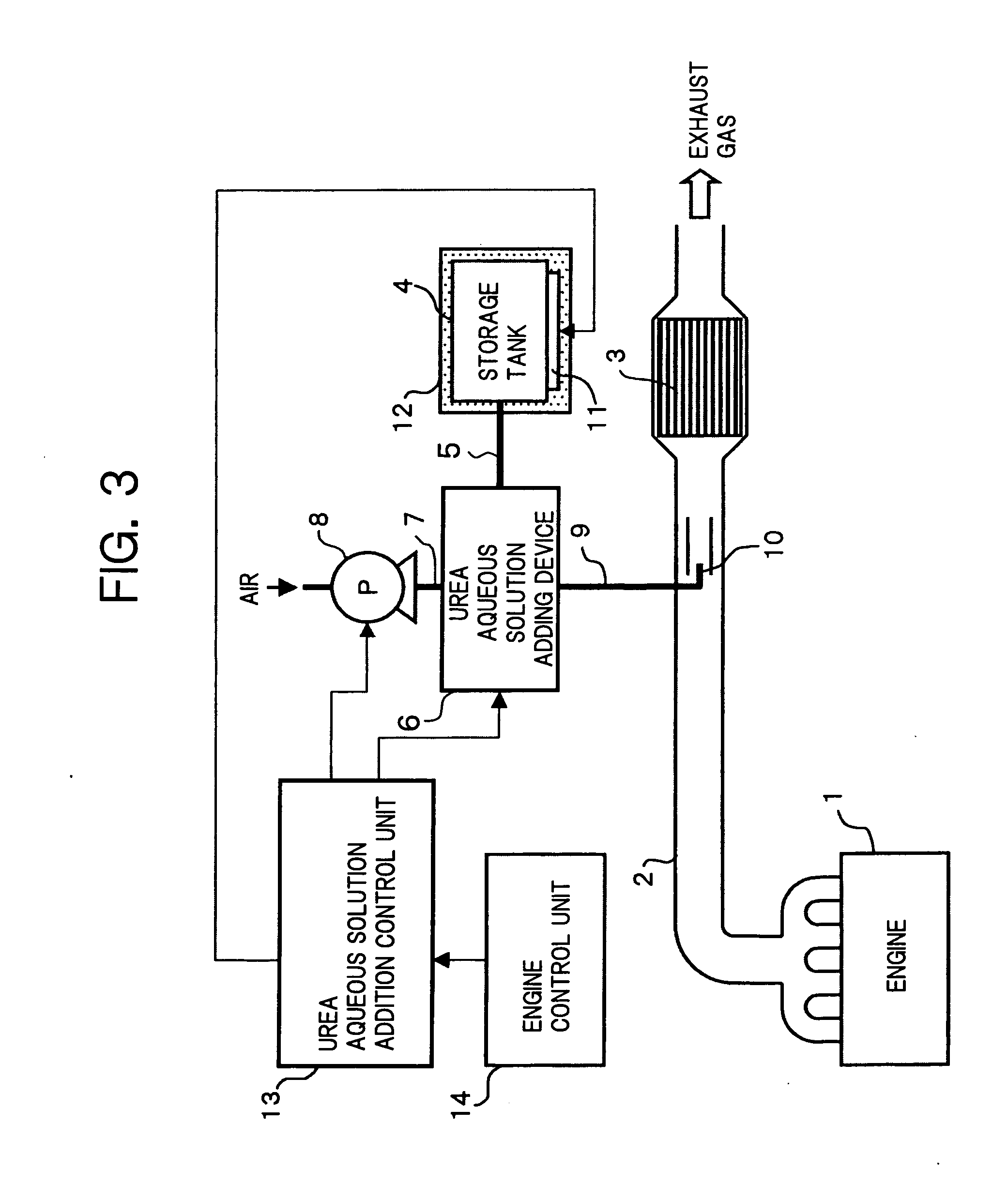Exhaust gas purifying apparatus
a technology of exhaust gas and purification apparatus, which is applied in the direction of lighting and heating apparatus, machine/engine, separation process, etc., can solve the problems of insufficient supply of insufficient and insufficient supply of ammonia to the nox reducing catalytic converter, etc., to enhance the efficiency of hydrolysis of urea aqueous solution and short time
- Summary
- Abstract
- Description
- Claims
- Application Information
AI Technical Summary
Benefits of technology
Problems solved by technology
Method used
Image
Examples
first embodiment
[0019]FIG. 1 shows an exhaust gas purifying apparatus according to the invention.
[0020] In an exhaust pipe 2 forming an exhaust passage of an engine 1, a NOx reducing catalytic converter 3 for reducing and purifying NOx is disposed. The NOx reducing catalytic converter 3 is formed by supporting a zeolite active component, for example, on a monolith-type catalyst carrier made of ceramic cordierite or Fe—Cr—Al heat resisting steel and having a honeycomb-shaped cross section. The active component supported on the catalyst carrier is activated when ammonia as a reducing agent is supplied, and effectively converts NOx to harmless substances.
[0021] The exhaust gas purifying apparatus is provided with a storage tank 4 for storing a urea aqueous solution. The storage tank 4 is connected to a urea aqueous solution adding device 6 through piping 5. On the other hand, the urea aqueous solution adding device 6 is connected to a pump 8 through piping 7. The pump 8 pressurizes air and supplies t...
third embodiment
[0033]FIG. 4 shows the exhaust gas purifying apparatus according to the invention.
[0034] In the embodiment, in order to heat the urea aqueous solution stored in the storage tank 4 by a coolant of the engine 1, a configuration in which piping 22 for the coolant is made to pass through the storage tank 4 is employed. In this way, without using the electric heater, the urea aqueous solution stored in the storage tank 4 is heated and the temperature of the solution is increased by utilizing waste heat. Accordingly, it is possible to suppress an energy consumption required to increase the temperature of the urea aqueous solution. In the embodiment, the piping 22 corresponds to the heating device.
fourth embodiment
[0035]FIG. 5 shows the exhaust gas purifying apparatus according to the invention.
[0036] In the embodiment, in order to heat the urea aqueous solution to be supplied to the urea aqueous solution adding device 6, a configuration is employed in which an intermediate portion of the piping 5 connecting the storage tank 4 and the urea aqueous solution adding device 6 is wound around the exhaust pipe 2 positioned on the exhaust downstream side of the NOx reducing catalytic converter 3. In this way, without using the electric heater, the urea aqueous solution flowing through the piping 5 can receive heat from the exhaust gas flowing through the exhaust pipe 2 and the temperature of the solution is increased by utilizing wasted heat. Therefore, it is able to suppress the energy consumption required to increase the temperature of the urea aqueous solution. At this time, because the exhaust heat on the exhaust downstream side of the NOx reducing catalytic converter 3 is utilized, the temperat...
PUM
| Property | Measurement | Unit |
|---|---|---|
| Temperature | aaaaa | aaaaa |
| Flow rate | aaaaa | aaaaa |
Abstract
Description
Claims
Application Information
 Login to View More
Login to View More - R&D
- Intellectual Property
- Life Sciences
- Materials
- Tech Scout
- Unparalleled Data Quality
- Higher Quality Content
- 60% Fewer Hallucinations
Browse by: Latest US Patents, China's latest patents, Technical Efficacy Thesaurus, Application Domain, Technology Topic, Popular Technical Reports.
© 2025 PatSnap. All rights reserved.Legal|Privacy policy|Modern Slavery Act Transparency Statement|Sitemap|About US| Contact US: help@patsnap.com



